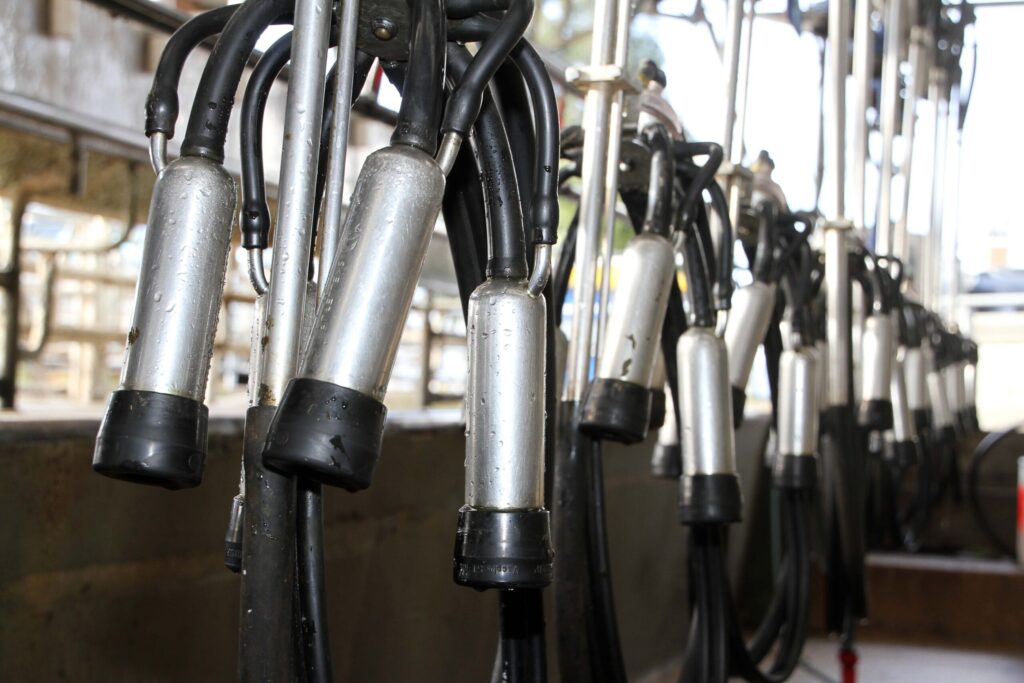
By Cristina Alvorado, commercial manager, data and insight at NZX.
September was another eventful month for the dairy industry, with significant developments both domestically and internationally.
The standouts include New Zealand recording its highest year-on-year (YoY) growth in August milk production since 2020, strong prices for skim milk powder (SMP) and whole milk powder (WMP) on the Global Dairy Trade (GDT) platform, constrained milk production in other major dairy regions, and Fonterra announcing its second-largest dividend payout in history.
New Zealand’s milk production for August rose by 10.0% YoY, totalling 123.8 million kg of milksolids. This is the highest figure for August since 2020, driven by good pasture growth in key regions and favourable weather conditions across the country.
Season-to-date production is now 8.3% higher compared to last year, showing a solid start to the dairy season. In tonnage terms, milk production was up 9.0% YoY, with 1.42 million tonnes of milk recorded – again, the highest August result since 2020.
In contrast, other major dairy-producing regions have not fared as well. For August milk production, the United States reported a YoY decline of -0.2%, Argentina saw a steep drop of -4.0%, Uruguay fell -by 5.5%, and Europe’s July milk production posted only a slight 0.4% increase.
The US continues to face challenges, including avian flu outbreaks and tight availability of heifers, while Europe is grappling with a rise in blue-tongue virus cases and non-favourable weather in some key countries.
These disruptions are putting pressure on milk supply in these regions, which could, in turn, have implications for global dairy prices.
Global Dairy Trade events in September were mixed. Event 363 saw a slight dip of – 0.4% in the GDT index, while Event 364 bounced back with a 0.8% rise. Throughout both events, certain products stood out, particularly SMP, cheddar, and mozzarella, which all posted price gains.
Notably, Event 364 recorded the highest average price for SMP on the GDT platform in the past 12 months, at US$2,809/t. This strength in SMP pricing was largely driven by a surge in demand from north Asia, particularly China, as buyers there replenished stocks of powders.
The upward trend continued in October’s first GDT event, Event 365, where the overall index rose by 1.2% and WMP saw its highest average price on the platform since October 2022 with US$3,559/t. This recent result suggests a stabilisation of prices, which may offer further reassurance to farmers as the season progresses if demand continues to hold.
On the trade front, NZ’s total dairy exports declined by -13.8% YoY in August, primarily due to the seasonal lull in exports. However, year-to-date (YTD) exports are still up by 0.7%. This drop in August was anticipated, as it follows Fonterra’s strategy of minimising inventories towards the end of its financial year. It is worth noting that this is a common practice to ensure the co-op doesn’t hold too much stock going into the new season.
In contrast, other dairy-producing regions have reported stronger export performances. Argentina’s August exports were up 10.9%, while the US, Europe, and Australia all saw growth in July exports, rising by 7.8%, 4.2%, and 20.2%, respectively.
For many NZ farmers, Fonterra’s announcement in late September brought positive news. The co-operative increased its Farmgate Milk Price forecast for the 2024/25 season by 50 cents, bringing it to a midpoint of $9.00 per kg of milksolids, which is in line with our NZX milk price calculator’s forecast.
This revision, combined with a 55-cent dividend payout for the 2023/24 season, should bolster confidence. The dividend is the second-largest in Fonterra’s history, only surpassed by the 59-cent payout in 2007.
Overall, the outlook for the New Zealand dairy season remains optimistic. The strong start in milk production, coupled with firm GDT prices, is encouraging. However, keeping a close eye on global demand will be critical, particularly as China implements new economic stimulus measures that could boost dairy imports.
Additionally, with butter supply constraints in Europe and production issues in key regions, New Zealand is well-positioned to maintain strong export demand in the coming months.
In Focus Podcast | Lessons from Meeting the Market
Bryan is joined by senior reporter Neal Wallace who reflects on his six-week Meeting the Market tour that saw him visit some of our key customers. From China to the United Kingdom, the European Union and Dubai, the message was the same. People love our food and we are a preferred provider, but we need to continually improve our sustainability credentials and be transparent about how that is being done.



